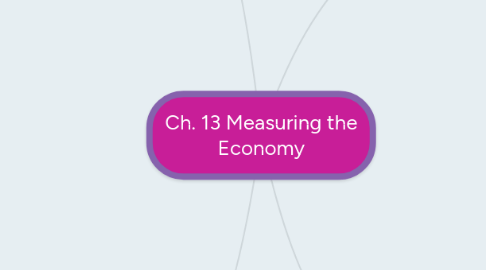
1. What Does the Inflation Rate Reveal About an Economy’s Health?
1.1. Creeping Inflation: a gradual, steady rise in the price of goods and services over time.
1.2. Hyperinflation: Runaway inflation creates extreme uncertainty in an economy. No one can predict how high prices will go, and people lose confidence in their currency as a store of value.
1.3. Deflation: a downward trend in prices, wages, and business activity.
1.4. Consumer Price Index : (CPI) a measure of price changes in consumer goods and services over time; shows changes in the cost of living from year to year
1.5. Inflation rate: the percentage increase in the average price level of goods and services from one month or year to the next
1.6. "But raising rates also gives the Fed more ammunition in the event of another economic downturn. If the U.S. economy went south tomorrow and America plunged into another recession, the Fed wouldn't be able to do very much to help with interest rates already close to zero." (Link to article on white box)
1.6.1. When interest rates are low there is no cushion if the economy goes into a recession.
2. How Does the Business Cycle Relate to Economic Health?
2.1. The Four Phases of the Business Cycle
2.1.1. Expansion: period of economic growth
2.1.2. Peak: Highest level of economic activity
2.1.3. Contraction: Period of economic decline
2.1.4. Tough: Lowest level of economic activity
2.2. Economic Indicators
2.2.1. Leading indicators forecast the peak and trough of a business cycle, not precisely
2.2.2. Lagging indicators are used to confirm that one phase of the business cycle has ended and another started (unemployment)
2.2.3. Coincident indicators are measures that consistently rise or fall along with expansions and contractions (real GDP, inflation)
2.3. From Boom to Bust
2.3.1. The economy is healthy and growing in time of expansion, a boom, and during contractions it eventually hits a bust, and after the tough you cycle back to expansion and another boom
2.4. Recession: period of declining national economic activity, usually measured as a decrease in GDP for at least 6 months
2.5. Depression: a prolonged economic downturn characterized by plunging real GDP and extremely high unemployment
2.6. http://cdn.yourarticlelibrary.com/wp-content/uploads/2014/04/clip_image002570.jpg (Image link)
3. How Do Economists Measure the Size of an Economy?
3.1. Adjusting for Inflation- the Commerce Department calculates real GDP, a measure of constant dollars. Real GDP allows us to compare the total output as if prices never changed.
3.2. Gross Domestic Product
3.2.1. Measures a country's total economic output over a period of time.
3.2.2. Steady increase of GDP is a sign of economic health.
3.2.3. Household consumption+ business investment+ gov. purchases+ net exports= GDP (C+ I+ G+ NX =GDP)
